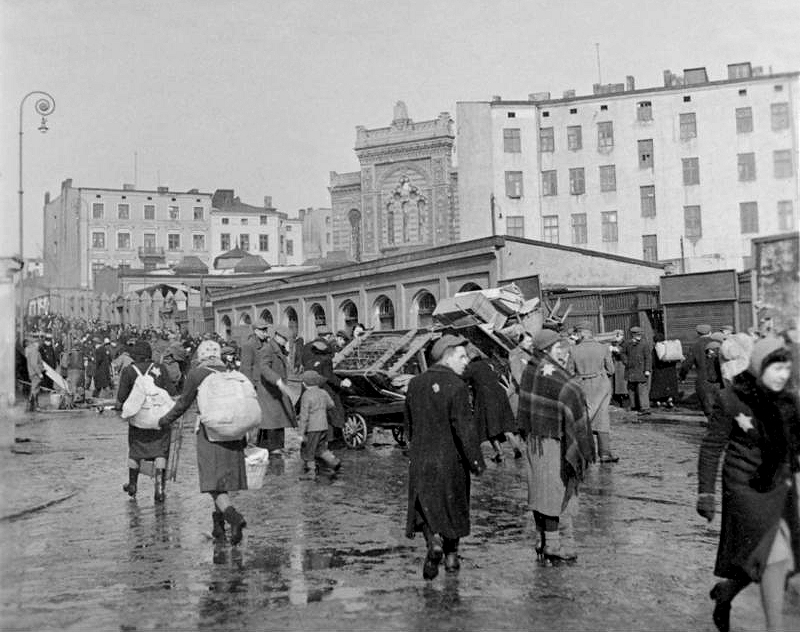World War Two began when German tanks rolled into Poland on September 1, 1939. A week later the Nazis occupied the city of Łódź in the country’s center. Hitler decided to annex Łódź and renamed it Litzmannstadt. 233,000 Jews lived in the city—a third of the population—and their presence posed a problem for the Germans seeking to create a judenrein zone. Immediately, the Germans authorized anti-Jewish decrees. Jews were forced to wear a yellow star on the chest and back; they were prohibited from leaving their homes in the afternoon, barred from traveling on the main thoroughfare, and from using public transportation. Economic repression dispossessed Jews of their property and means of earning a living.
By the time the Nazis began secretly planning a ghetto in December 1939, Jews were fleeing Łódź in droves and 30 percent had left by May. On February 8th, 1940, SS Brigadeführer Johannes Schäfer issued an order confining Jews to a list of streets they could reside. Construction of wooden and barbed wire fence surrounding those streets was completed in April, and on May 10th, Schäfer announced that “any attempt by a ghetto resident to leave the ghetto” would be punished with death. Two units of German police guarded the perimeter, and just like that, 164,000 were trapped. So tight and total was the sealing of the Łódź Ghetto that historians consider it the most impenetrable and isolated of all Nazi ghettos. There were only two ways out: in a casket or a cattle car.
